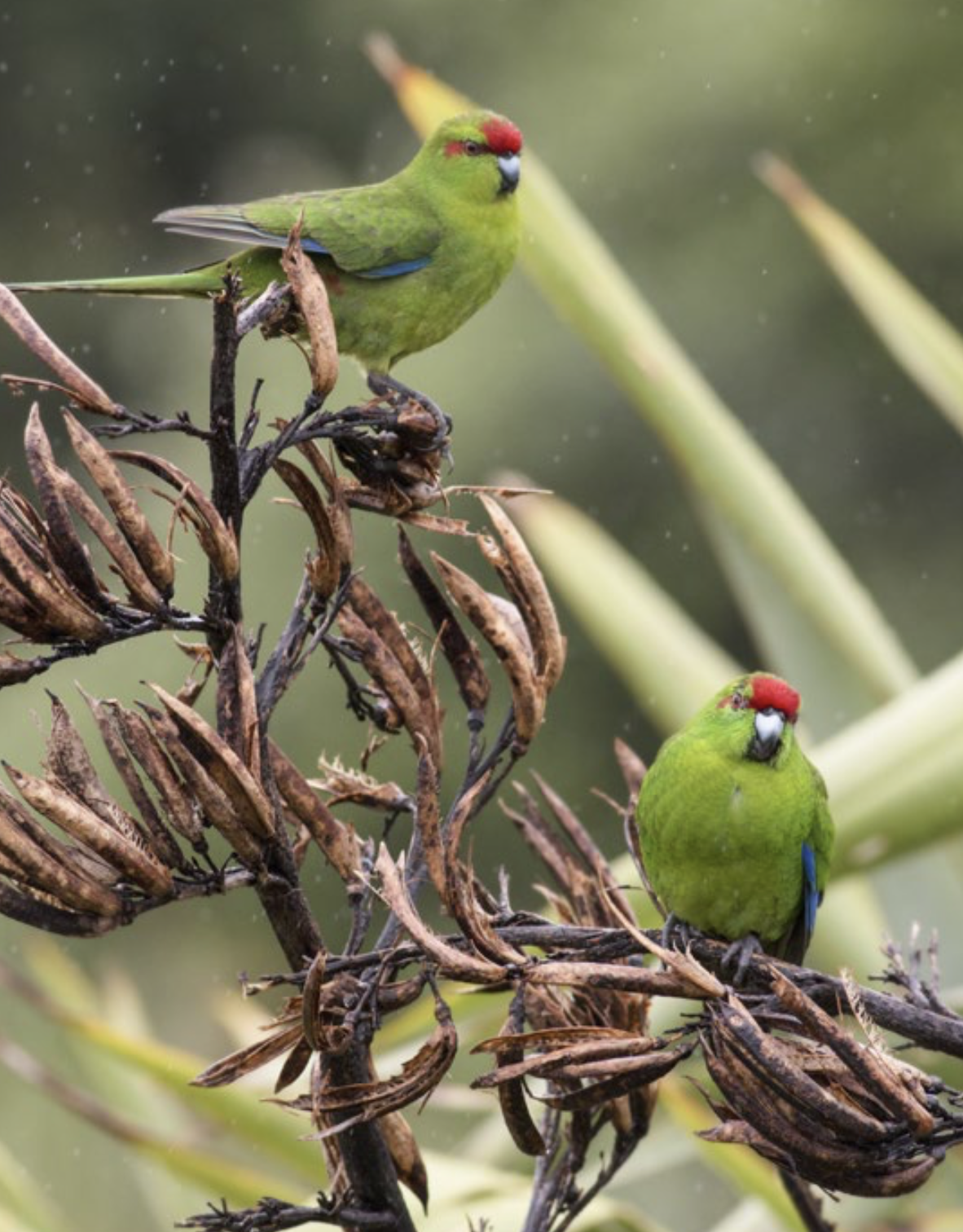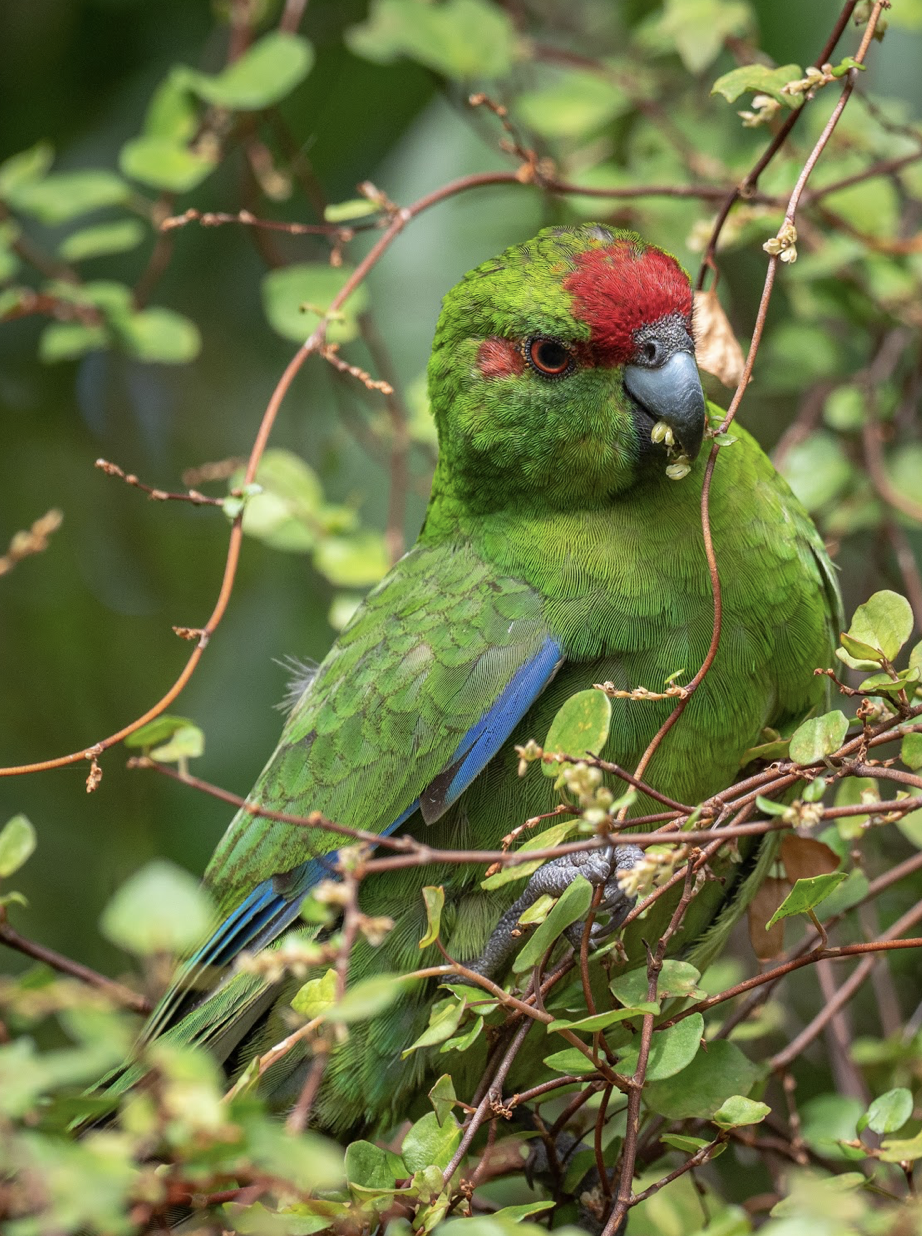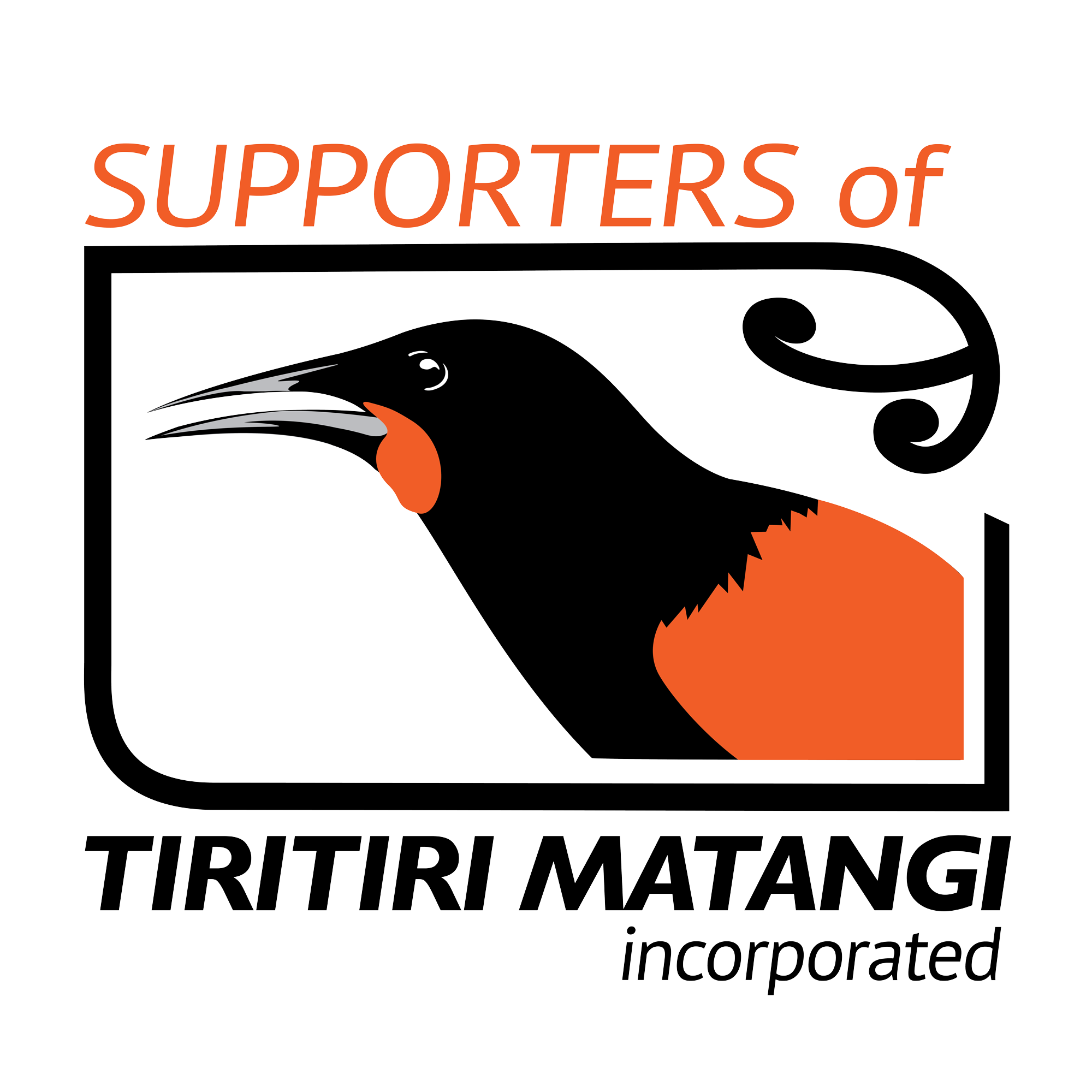Fifty years since the translocation of kākāriki/ red-crowned parakeet
Author: Dick Veitch New Zealand ecologist and ornithologistFrom the Supporters of Tiritiri Matangi Archives: Dawn Chorus, 138, August 2024Header photo credit: Geoff Beals
To celebrate this milestone, we asked Dick Veitch, who was involved in the translocation, to share his memories of that time.
Visitors to this island haven have now seen kākāriki as they surely were over mainland New Zealand before the arrival of humans and their accompanying pests.
On Te Hauturu-o-Toi / Little Barrier Island, kākāriki survived with cats and kiore as predators. On the Hen and Chicken Islands, they survived with only kiore as a predator. On Macauley Island, they survived with goats and kiore and no trees, but on nearby forested Raoul Island, they were eradicated by a combination of goats, cats, and two rat species. When the goats were eradicated, kākāriki were again present in the forest, but we doubt that they were breeding. When the cats and rats were also removed, kākāriki were again abundant birds in the forest.
Like so many of our birds, kākāriki have two basic needs to overcome when faced with predation and competition: food and nesting. One of their preferred feeding habits is to scavenge for fallen seeds among the leaf litter. In this, they compete with kiore, who also scavenge for seeds. Ground- feeding also makes them susceptible to predation by cats.
It seems they can survive both of these threats if there are no goats present to remove the forest understory and most of the leaf litter, thus making it easy for cats to hunt. It also seems that kākāriki can defend their nests against kiore, but not against larger rats.
That readily explains the absence of kākāriki from many islands, but not Tiritiri Matangi, which had only kiore and always had some forest. We presume kākāriki were present but have no proof of this as Tiritiri Matangi, like Cuvier and a few other islands, was not often visited by ornithologists.
By the late 1960s, staff in the Wildlife Service, later to become part of the Department of Conservation, were attempting to actively improve our offshore islands by removing goats, sheep and cats and returning missing bird species. Kākāriki were proposed for re-introduction to Tiritiri Matangi and Cuvier, but there was controversy over the source of birds to release. Some aviculturists, who had stocks of captive kākāriki, wanted their birds to be used. Others in the decision chain stalled, on the grounds that such aviary-bred birds were cross-breeding between red and yellow-crowned species. It was then determined that the kākāriki taken from Hen Island to Mount Bruce Native Bird Reserve was a pure strain and thus suitable for the purpose. In January 1974, a consignment of approximately 30 kākāriki was sent from Mt. Bruce to Auckland, for liberation on Cuvier Island. Chris Smuts-Kennedy, Wildlife Service, duly took them off by road to Whitianga but, when he got there, the boat was not in the harbour and the sea was too rough for others to venture out. The birds were taken to an aviary in Auckland for a few days of rest before being taken by Wally Sander, Chief Ranger, Hauraki Gulf Maritime Park, and Chris to Tiritiri Matangi and released.
As we had hoped, they established themselves on the Island. There was just one problem. A member of the public made an accusation, to the Wildlife Service at least, that the lighthouse keeper on Tiritiri Matangi was catching kākāriki and selling them. We could not establish any truth in this accusation and concluded it may have come from a miffed aviculturist.
Tree planting began on Tiritiri Matangi in 1984, and Mike Graham, with members of the Ornithological Society, started bird counts in 1987. By that time, the kākāriki population was well established and probably growing, as the island environment changed with time and the planting programme.
From 1990 to 1992, kākāriki comprised 4.9% of the birds counted on the ‘forest transects’. Kiore were removed from the Island in 1993. From 1996 to 1998, kākāriki comprised 7.3% of the birds counted on the same transects. This was a 177% increase in the number of kākāriki counted, but it appeared to be less of an increase than the general bird population on the Island. There was a noticeable abundance of korimako/bellbirds and tīeke/saddlebacks at the same time. For all these species, the big benefit was the removal of a food competitor.
I hope that kākāriki and all other birdlife on Tiritiri Matangi continue to be a joy for all to behold for a very long time to come.


